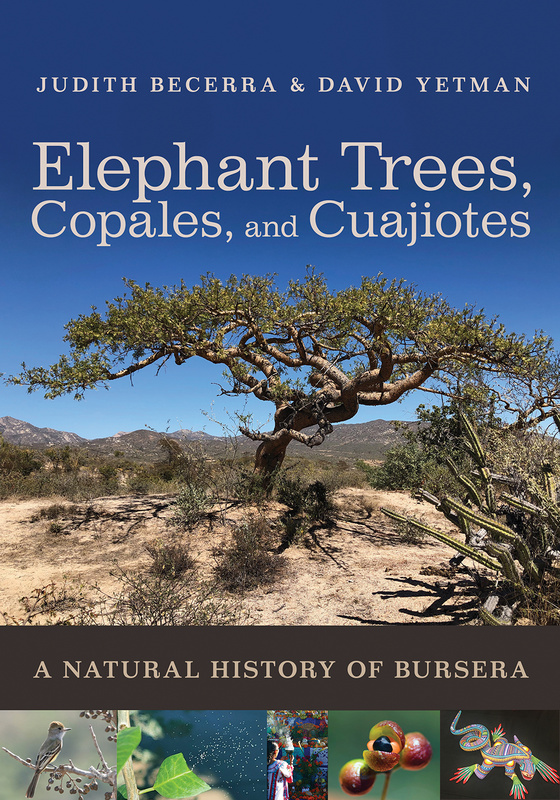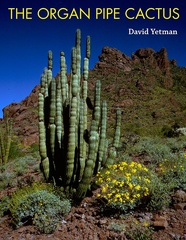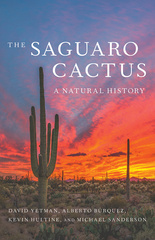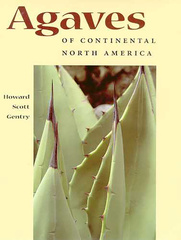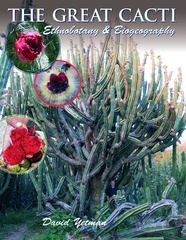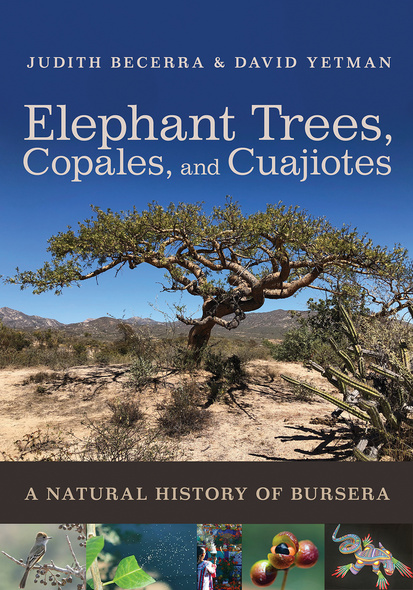
272 pages, 7 x 10
190 color photographs, 3 maps, 1 table
Paperback
Release Date:06 Feb 2024
ISBN:9780816551941
Elephant Trees, Copales, and Cuajiotes
A Natural History of Bursera
The University of Arizona Press
Predominantly native to the U.S. Southwest, Mexico, and the Caribbean, the various species of Bursera have been prized throughout history for their distinctive aromas, medicinal properties, workable wood, and attractive appearance. Despite its extensive past and current use as incense in religious ceremonies, and its resourceful antiseptic ability to treat a range of maladies, no comprehensive book exists on this vital yet overlooked plant. Highlighting bursera’s importance and impact within the desert Southwest and Mexico, this volume will be the first book to describe the ecology, evolution, ethnobotany, and peculiar chemistry of the many species of Bursera.
In the United States, Bursera is represented by the short, contorted, and aromatic elephant tree of the hot Sonoran Desert and the stately and colorful gumbo limbo of southern Florida, while in the torrid lowlands of southern Mexico, the engines of evolution have produced forests dominated by dozens of species of Bursera, each with a peculiar ecological slot. This evolutionary tableau presents a complicated sex life that puzzles scientists. Recent research also reveals a gripping narrative of an epic struggle between trees and the insects that would subsist on their leaves: the insects seeking to exploit a food resource, the trees reacting with ever-changing, dramatic counter strategies. In addition to the fascinating and intricate workings of the genus’s ecological adaptations, burseras play a formative role in the lives of indigenous populations. Native peoples relish the plants’ aromatic resin, workable wood, and often colorful bark as a source for endless human applications.
Written in an engaging style, enhanced with two hundred color photographs, and complete with a compendium of species descriptions, this book will be an essential reference on a significant North American plant.
In the United States, Bursera is represented by the short, contorted, and aromatic elephant tree of the hot Sonoran Desert and the stately and colorful gumbo limbo of southern Florida, while in the torrid lowlands of southern Mexico, the engines of evolution have produced forests dominated by dozens of species of Bursera, each with a peculiar ecological slot. This evolutionary tableau presents a complicated sex life that puzzles scientists. Recent research also reveals a gripping narrative of an epic struggle between trees and the insects that would subsist on their leaves: the insects seeking to exploit a food resource, the trees reacting with ever-changing, dramatic counter strategies. In addition to the fascinating and intricate workings of the genus’s ecological adaptations, burseras play a formative role in the lives of indigenous populations. Native peoples relish the plants’ aromatic resin, workable wood, and often colorful bark as a source for endless human applications.
Written in an engaging style, enhanced with two hundred color photographs, and complete with a compendium of species descriptions, this book will be an essential reference on a significant North American plant.
If you’re curious why a tree might spit at you, if you're interested in cultivating the most fantastically shaped bonsai trees of the Americas, if you're wondering which plants produce a fragrant sap that ends up in the incense burners of Mexican churches—you need to read this book. It’s not just the definitive treatment of over a hundred species of Bursera. It's about the dizzying diversity of life that is Mexico.’—Jim Malusa, author of Into Thick Air: Biking to the Bellybutton of Six Continents
‘This fascinating book summarizes the natural history of the genus Bursera, a group of trees of immense ethnobotanical importance in the drylands of Mesoamerica and Aridoamerica but surprisingly overlooked in the published literature. Together with its sister species in Africa and the Old World—frankincense and myrrh—there is no major religion in the world that does not use resins from plants in this family to enhance spiritual contemplation, prayer, and healing. And yet very few people seem to know much about these fascinating plants that have been so critically important in the evolution of traditional lores in the deserts and drylands of North America.’—Exequiel Ezcurra, co-author of The Basin of Mexico: Critical Environmental Issues and Sustainability
Judith Becerra is an associate professor at Biosphere 2, University of Arizona. A Fulbright, Beckman, and National Geographic award winner, Becerra’s research interests include the evolution and ecology of the genus Bursera and interaction with herbivores and the chemical and genomic links between stinkbugs and Alzheimer’s disease.
David Yetman is a researcher at the Southwest Center of the University of Arizona whose specialties include the peoples and ecology of northwest Mexico and the southwestern United States. He is the author of numerous books, including Sonora: An Intimate Geography and The Saguaro Cactus: A Natural History. He has traveled extensively in the Bursera-rich regions of southern and western Mexico.
David Yetman is a researcher at the Southwest Center of the University of Arizona whose specialties include the peoples and ecology of northwest Mexico and the southwestern United States. He is the author of numerous books, including Sonora: An Intimate Geography and The Saguaro Cactus: A Natural History. He has traveled extensively in the Bursera-rich regions of southern and western Mexico.

